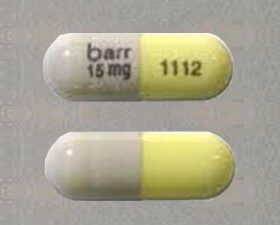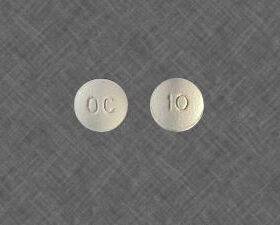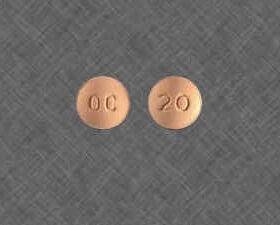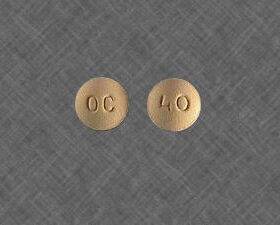- Your cart is empty
- Continue Shopping

Shop
Buy Oxycontin Online

You Can Buy Oxycontin Online with same-day delivery from our trustworthy internet pharmacy and enjoy fantastic discounts. Our prices are fairer than those at local pharmacies, and we supply only FDA-approved authentic medications. Additionally, we offer the convenience of overnight delivery.
Oxycontin Overview
Oxycontin is a prescription opioid pain medication that contains oxycodone, a strong narcotic pain reliever. It was originally developed in Germany in 1916 from thebaine, an opioid alkaloid found in the poppy plant. Oxycontin was first brought to market in the United States in 1996 by Purdue Pharma to provide relief for moderate to severe pain when around-the-clock pain medication is needed for a prolonged period.
What is Oxycontin?
Oxycontin is a brand-name prescription opioid painkiller. The active ingredient in Oxycontin is oxycodone hydrochloride, which is an opiate agonist. This means it binds to opioid receptors in the brain to block the perception of pain. Specifically, oxycodone blocks pain signals between the nerves in the body and the brain.
Oxycodone is similar to morphine but with a slightly different chemical structure. Like other opioids, oxycodone works by activating mu-opioid receptors, which are the brain’s natural endorphin receptors. When oxycodone activates these receptors, it blocks pain signals and releases dopamine, creating temporary feelings of euphoria and relaxation.
At regular dosages, oxycodone provides effective pain relief by inhibiting pain signals to the brain but does not eliminate sensations. At higher doses, however, oxycodone starts fully activating mu-opioid receptors, which induces pain relief, sedation, respiratory depression, and euphoria.
Oxycontin is an extended-release formula, meaning the oxycodone is released gradually over time. This provides around-the-clock pain relief for up to 12 hours with steady dosing in the bloodstream, compared to immediate-release oxycodone which only works for about 4-6 hours.
Medical Uses of Oxycontin
OxyContin is a popular pain medication that provides relief for individuals dealing with chronic, severe pain. Oxycontin is a highly effective medication when prescribed correctly and monitored carefully.
The main conditions OxyContin treats include:
- Moderate to severe pain caused by cancer
- Neuropathic pain associated with diabetes and other medical conditions.
- Chronic back pain or severe arthritis
- Pain after surgery or from major injuries
For these painful conditions, OxyContin can provide significant benefits for patients. It works by binding to opioid receptors in the brain and spinal cord, blocking pain signals. This provides substantial pain relief that allows patients to function and enjoy an improved quality of life.
OxyContin enables many patients to regain their independence, return to work and hobbies, sleep comfortably, and avoid the depression that often accompanies chronic pain. When taken as directed under medical supervision, OxyContin can greatly improve well-being and daily functioning.
Risks & Side Effects of Oxycontin
While OxyContin can help manage pain when used as prescribed, it does carry risks including addiction, overdose, and side effects.
OxyContin has a high potential for addiction and abuse due to the powerful opioid contained in the medication. Even when taken exactly as prescribed, OxyContin can still lead to dependence and addiction. People taking OxyContin may seek to misuse the medication by taking higher doses than prescribed to attain a euphoric high. Long-term use can easily lead to physical and psychological dependence on the drug.
Common side effects of OxyContin include drowsiness, dizziness, headache, dry mouth, nausea, vomiting, sweating, and constipation. More severe side effects may include slowed or difficult breathing, extreme drowsiness, unusual tiredness or weakness, confusion, hallucinations, fainting, or coma. Patients taking OxyContin should be monitored closely and report any concerning or serious side effects to a doctor right away.
The Opioid Epidemic
Prescription opioid abuse has surged in the United States over the last 25 years. By 2010, enough opioid prescriptions were written to medicate every American adult with a typical dose of 5mg of hydrocodone every 4 hours for 1 month.[1] Several factors contributed to the rise in opioid prescriptions and misuse:
- Aggressive marketing of OxyContin by Purdue Pharma which promoted it as a safer, less addictive alternative to other opioid painkillers
- Increased prescription of opioids by doctors for common conditions like back pain, arthritis and injuries
- Lenient prescribing practices such as prescribing 30- or 60-day supplies and refilling prescriptions early
- Greater social acceptance of prescription drugs versus illicit drugs
- Widespread misconceptions that opioid painkillers are safe because they are prescribed by doctors
- Lack of patient screening and monitoring for signs of misuse.
Alternatives for Pain Management
Pain management is possible without the use of opioids like Oxycontin. Many alternatives can provide relief, either alone or in conjunction with other therapies.
Non-opioid Medications
Several classes of non-addictive medications can help manage pain. These include over-the-counter pain relievers like acetaminophen, ibuprofen, and naproxen. Prescription options may include steroids, antidepressants, and anticonvulsants, which have been found to help with certain types of chronic pain. Topical painkillers like lidocaine patches or creams can treat localized pain.
Non-opioid medications typically have less severe side effects than opioids. However, they may still carry risks like stomach bleeding or liver damage. Patients should consult their doctor to weigh the pros and cons of different medication options.
Signs of Addiction & Abuse
OxyContin addiction can be difficult to identify due to the way the drug alters brain chemistry and deteriorates health over an extended period. However, there are common physical, behavioral, and psychological signs that indicate someone is abusing or addicted to OxyContin:
Physical Signs
- Nose sores from snorting OxyContin
- Constipation, nausea, vomiting
- Itching, rashes, or infections from scratching
- Severe dental problems
- Sleep disturbances – insomnia or hypersomnia
- Slurred speech, coordination issues
- Slow breathing rate
Psychological Signs
- Strong cravings for OxyContin
- Anxiety when access to the drug is limited
- Appearing high, drowsy, or intoxicated
- Agitation, irritability, mood swings
- Lack of motivation, energy, or interest
- Social isolation, secretive behavior
- Financial, work, or family problems















